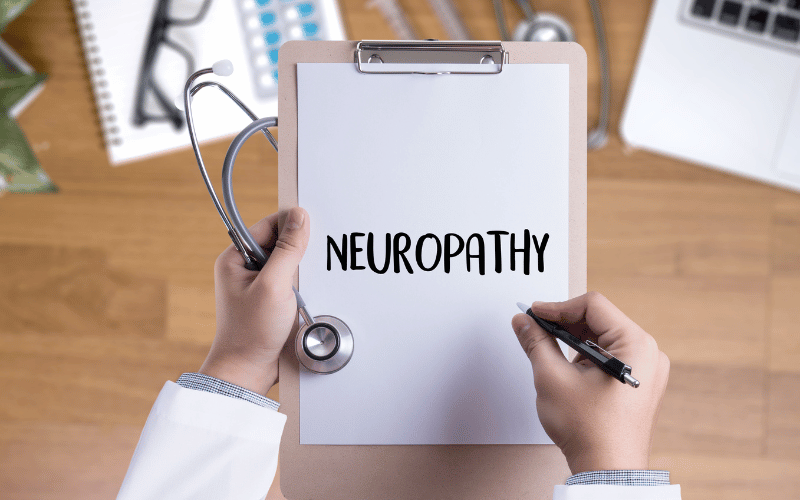Symptom 4: Peripheral Neuropathy

Peripheral neuropathy is a medical term that may sound complex, but at its core, it refers to nerve damage. Specifically, this term addresses the damage to those nerves located outside the brain and spinal cord, known as peripheral nerves. These nerves play a critical role in our body, responsible for transmitting information between the central nervous system and the rest of our body parts. When these channels of communication are disrupted, the effects can be both perplexing and debilitating.
Before diving deeper into the complexities of this symptom, let’s address the early signs. It often starts subtly—a fleeting tingling sensation in the extremities, especially in the hands or feet. It’s akin to the feeling when a limb “falls asleep.” But unlike that temporary sensation, which usually disappears after shaking out the limb, this one persists. Over time, this tingling can intensify, becoming more consistent and bothersome.
As cryoglobulinemia vasculitis progresses, so does the severity of peripheral neuropathy. That once mild tingling may evolve into a numbness that blankets the extremities. This loss of sensation can be concerning. Imagine not feeling heat from a stove or the coldness of an icy surface. Beyond numbness, some individuals describe experiencing sharp, jolting pains—almost as if they’re being electrocuted. These sensations can be unpredictable, further causing distress and disruptions in daily activities.
So, why does peripheral neuropathy occur in the context of cryoglobulinemia vasculitis? The disease is inflammatory by nature, targeting various body systems, including the circulatory system. When inflammation affects the tiny blood vessels responsible for nourishing the nerves, nerve damage can ensue. It’s a chain reaction—the inflamed vessels can’t adequately supply the nerves, leading to malfunctioning and eventually symptoms of neuropathy.
Given the potential complications of peripheral neuropathy, early intervention becomes paramount. It’s more than just managing pain or discomfort—it’s about preserving nerve function and, in turn, the quality of life. Medical evaluations, including nerve conduction studies, can help pinpoint the extent of nerve damage and guide the subsequent treatment approaches. The goal is not only to alleviate the symptoms but to address the root cause, curbing further nerve damage and the cascade of complications that might follow. (4)